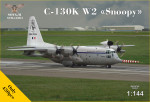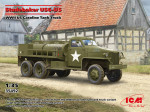Historical information:
AH-64D
Republic of Singapore Air Force AH-64D on static display during open house
The advanced model, the AH-64D Apache Longbow, is equipped with an improved sensor suite, a glass cockpit, and weapon systems. The main improvement over the A-variant is the dome installed over the main rotor which houses the AN/APG-78 Longbow millimeter-wave Fire Control Radar (FCR) target acquisition system and the Radar Frequency Interferometer (RFI). The raised position of the radome allows for detection and launching of missiles at targets when the helicopter is hidden by an obstacle (e.g. terrain, trees or buildings). A radio modem integrated with the sensor suite allows a AH-64D to share targeting data with other D-models. This allows a group of Longbow Apaches to fire on targets detected by the FCR of a single helicopter.
The aircraft is powered by a pair of uprated T700-GE-701C engines. The forward fuselage of the aircraft was expanded to accommodate new systems for improved crashworthiness, survivability, navigation, and 'tactical internet' communications capabilities. The first of the upgraded Block II Apaches was delivered to the US Army in February 2003. Block II includes upgrades to the digital communications systems.
Block III aircraft include the following upgrades: improved digital connectivity, the joint tactical radio system, enhanced engines and drive systems, capability to control UAVs, new composite rotor blade, full IFR capability and improved landing gear. The new blades, which successfully completed flight testing in May 2004, increased the Apache's cruise speed, climb rate and payload capability. The US Army now plans to field the first Block III equipped unit in November 2012. The Army awarded a contract to begin initial production of Block III helicopters in October 2010.
In 2011 AH-64Ds will be upgraded with VNsight low-light television sensors (LLTV) that will allow ambient lighting such as street lights, beacons, headlights and laser light to be viewable in low-light conditions. Existing thermal imagers cannot currently see this kind of light. | 


